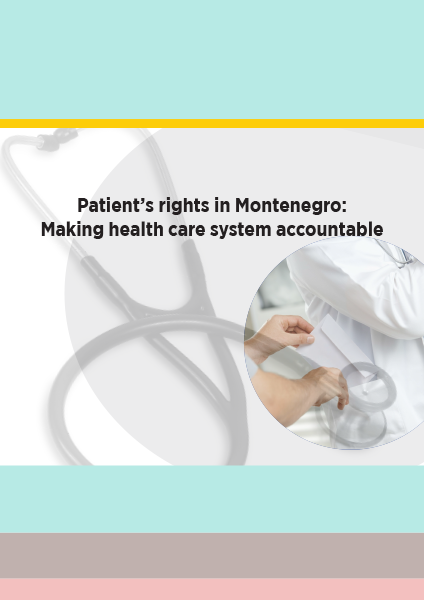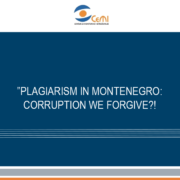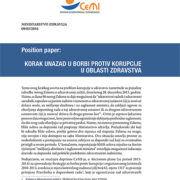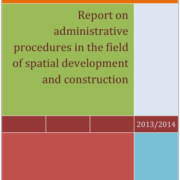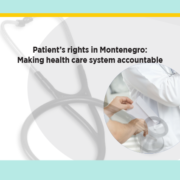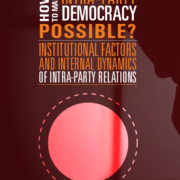Patient’s rights in Montenegro: Making health care system accountable
Product Description
its way towards the EU, but likewise a country where corruption and organized crime are widespread. The healthcare system is recognized as an area especially susceptible to corruption. Occurrence of corruption in healthcare negatively influences the quality and availability of medical services, decreases the number of provided services, increases their cost, and directly jeopardizes lives of patients. According to the results of a public opinion survey published by Directorate for Anti-Corruption Initiative in December 2015, corruption in healthcare takes up the first place (18.9% of the respondents believe there is corruption in the healthcare system), followed by police and inspection services. According to a public opinion survey CeMI conducted and published in 2016, 42.6% of the respondents consider that corruption is widely spread in healthcare and that it is mostly present within doctor-patient relations (37.8% of the respondents). This percentage has unfortunately decreased by only 1.3% in comparison with the research conducted in 2013. This fact indicates that there still remains a lot of work to be done in this field by the relevant institutions and the Montenegrin society even though this problem has been recognized by all relevant institutions and even though there has been progress in relation to it. The aim of this paper is to give an overview of the presence of corruption in the healthcare system in Montenegro, its main forms and causes, the shortcomings of existing anti-corruption policies in this area and finally to give recommendations for its reduction. The healthcare system is very complex, comprising many actors and decision-making levels as well as spheres which are recognized as “fertile ground” for the occurrence of corruption. Most studies recognize three levels of corruption in healthcare, categorizing them into so-called “petty” corruption and “grand” corruption. The first one refers to the problem of informal payments within doctor-patient relations which is recognized as the most widespread type of corruption in our society. So-called “grand” corruption comprises two levels: public procurement procedures and the relations between pharmaceutical and healthcare sectors. The focus of this policy paper will be on presence of corruption within the doctor-patient relationship.


 Montenegrin
Montenegrin